|
Points of Interest
|
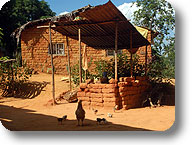
 |
Besides the itineraries in the Park and its surroundings (Kilombero Valley), the particular geographical position of Udzungwa Mountains, in the middle of a large system of different ecological realities of great naturalistic value and archaeological, historical and cultural interest, gives the opportunity to organize a journey throughout the territory of the central-southern Tanzania.
A stay in Udzungwa Mountains National Park may represent an occasion to visit the real "heart" of one of the most fascinating and naturalistically richest Countries of the world, among really diversified landscapes, environments, flora and fauna, far from the most known tourist circuits and the classic "cover images" of Africa.
In your journey, you may plan to visit the following places:
|
|
Mikumi National Park
|
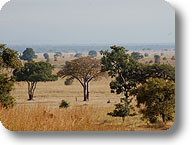

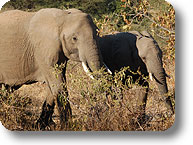

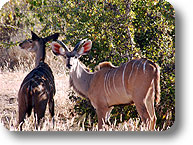



|
Mikumi National Park can be easily reached from Udzungwa Mountains National Park (Mang'ula) in about two hours. This protected area extends from the large plains of Mkata to the adjacent hills and almost represents a northern spur of the huge Selous Game Reserve. With an area of about 3,230 square kilometers, the Park protects interesting environments, from the grasslands interested by seasonal floods to the savannah with trees characterizing the plains, to the thorny scrubs and dry tropical forests of the hills, offering shelter to several animal species you can easily observe during the "game drives" carried out along the various accessible trails. Mikumi N.P. offers various accommodation opportunities both in campsites and lodges; moreover, in the nearby center of Mikumi you can spend the night in small and cheap hotels, like the Genesis Motel, where you can also taste the characteristic local cuisine and international dishes. |
Selous Game Reserve
|
| Selous Game Reserve is one of the largest and wildest protected areas of the earth (over 54,600 square kilometers). It develops in a vast hilly and flat territory crossed by the majestic River Rufiji, mainly covered with savannah with trees and thorny scrubs. This protected area, a true example of the purest African wilderness, protects a number of wild animals, among which over 800 Bird species and one of the most significant elephant populations of the whole continent (about 100,000 specimens), as well as the most characteristic representatives of the African savannah, including the big predators. Accessible from the town of Morogoro, halfway along the road connecting Dar Es Salaam with Udzungwa Mountains National Park, Selous G.R. offers various accommodation opportunities in tented camps situated in some of the most charming locations of the area. You can carry out tours on foot (Walking Safari) led by expert local rangers and tours by boat along the River Rufiji to observe aquatic birds, Hippos (Hippopotamus amphibius), Nile Crocodiles (Crocodylus niloticus), and herds of big Mammals drinking at the river. |
Isimila Stone Age Site
|
| Isimila Stone Age Site is an important archaeological site situated at about 20 kilometers from the town of Iringa, along the road to Mbeya, on a large plateau dominated by charming granite rock reliefs. The site preserves important evidences of our ancestors' activities dating back to over 60,000 ago, groups of nomadic hunters-collectors who used to go to the shores of an ancient and small lake which no longer exists. In the deposits of Isimila central valley there are several lithic tools, often associated to rests of big wild Mammals, especially hippos, the usual preys of Paleolithic hunters. Isimila archaeological area also includes an interesting geosite consisting of a deep canyon characterized by imposing pinnacles and erosion towers creating an environment of extraordinary charm. The site can be easily reached from the town of Iringa, where you can spend the night in various kinds of hotels and eat in the several town restaurants. |
Kalenga Historical Site
|
| Kalenga Historical Site is an important site of historical-cultural interest situated at about 30 kilometers from the town of Iringa, along the road leading to Ruaha National Park. In 1894 this location was the theater of one of the hardest anticolonial battles of the WaHehe people, led by Chief Mkwawa, against the German army. A small but interesting museum preserves evidences of the battle and the life of Chief Mkwawa, a real hero of the anticolonial resistance, as well as several objects of the traditional material culture of the WaHehe people. |
|
Ruaha National Park
|
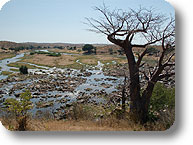



|
Ruaha National Park is one of the largest National Parks of Tanzania and the least known Park by tourists. It covers about 40,000 square kilometers in the western plateaus of the upper course of the River Ruaha. The Park territory, a very good example of African wilderness, is mainly characterized by hills covered with thorny scrubs and savannah with trees and by the Valley of the River Ruaha with its interesting riparian forest formations. The Park is populated by several animal species, above all Birds (over 500 species) and Mammals, among which about 12,000 elephants and all the most characteristic herbivores and predators of the savannah. Along the trails, during the "game drives", you can easily observe herds of Buffaloes (Syncerus caffer) and various species of antelopes, among which the Greater Kudu (Tragelaphus strepsiceros) whose imposing males boast off big spiral horns. In the most isolated places of the Park it is also possible to meet big predators like the Lion (Panthera leo), but also the shy and elusive Leopard (Panthera pardus). Along the River Ruaha, with an authorization issued by Ruaha N.P. Headquarter in Msembe, you can also carry out fascinating and exciting tours on foot (Walking safari) led by an expert ranger to observe aquatic Birds, Hippos (Hippopotamus amphibius), Nile Crocodiles (Crocodylus niloticus), and Elephants (Loxodonta africana) drinking at the river. You can easily reach the Park from the town of Iringa along a 130 km dirt but rather comfortable road. Within the Protected Area you can spend the night both in campsites and rather expensive lodges (Ruaha River Lodge and Mwagusi River Camp) while outside the Park, at about 30 km from the Park entrance in the village of Tungamalenga, there are ideal and cheap accommodation opportunities in a campsite and in a bungalow complex managed by local cooperatives, with annexed restaurants where you can taste the characteristic dishes of the Tanzanian cuisine. From this location you can also leave for interesting tours on foot lasting half day and led by local guides to visit charming waterfalls and some thermal water springs situated at the foot of harsh granite hills from where you can enjoy wonderful views over the Valley of the River Ruaha. |
|
Further pictures of the Park:
|




